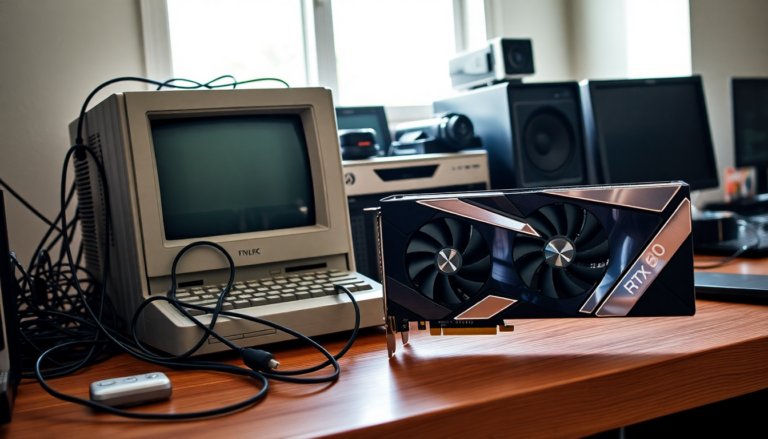Argomenti trattati
Imagine dusting off an old Intel Core 2 system and pairing it with a shiny new Nvidia RTX 50 graphics card. Sounds like a dream, right? Well, it turns out that while Nvidia’s latest driver update has opened the door for this unlikely duo, the reality is a bit less glamorous than many had hoped. As tech enthusiasts scramble to test the limits of this compatibility, one voice echoes through social media: the excitement is often overshadowed by the stark limitations of legacy hardware.
What sparked the excitement?
Earlier this week, the Nvidia GeForce driver re-enabled support for older Intel processors, dating back to the Core 2 era. This change was music to the ears of many PC DIYers who had longed for a way to integrate modern GPUs into their vintage setups. Bob Pony, a tech enthusiast known for his groundbreaking discoveries on Twitter (or X, as it’s now called), was among the first to share the exhilarating news. He successfully paired an Intel Core 2 Quad Q9450 with an RTX 5060 Ti, and his excitement was palpable. “It works!” he exclaimed, encouraging others to dive into this experimental territory.
The thrill quickly fades
But as Pony soon discovered, the excitement had a fleeting nature. After his initial success, he dove headfirst into testing modern games with his outdated setup. The reality of the situation hit hard: most games utilizing ray tracing simply wouldn’t run. The Core 2 Quad processor, while nostalgic, lacks the necessary instruction sets that many of today’s games demand. It’s like trying to fit a square peg into a round hole—no matter how hard you push, it just won’t fit.
The limitations of legacy systems
It’s one thing to dabble with hardware compatibility; it’s another to face the stark limitations of legacy systems. The struggles Pony reported are not unique. Many users are finding that while their older machines can technically run modern GPUs, the performance isn’t anywhere near what they expected. In fact, the majority of ray-traced games become unplayable due to these constraints. I remember when I attempted to run a high-demand game on a similarly outdated setup—what a frustrating experience! You know that feeling when you have high hopes, only to be met with a wall of disappointment? Yeah, I felt that.
Looking for silver linings
Yet, it’s not all doom and gloom. While ray tracing might be off the table, there’s still a chance for decent performance in less demanding titles. Gamers with a penchant for older games—those classics that defined our childhoods—may find that their Intel Core 2 systems can still provide a decent gaming experience. It’s a silver lining, albeit a slim one. Social media communities are buzzing with the idea of creating compatibility lists for various games. As we often find in tech circles, collaboration can lead to unexpected solutions.
A shift in gaming preferences?
Interestingly, this entire scenario raises a thought-provoking question: will users with older systems gravitate more towards vintage titles, given the gaming roadblocks with modern releases? Perhaps the nostalgia for classic games will outweigh the desire for cutting-edge graphics. After all, as many know, sometimes the charm of pixelated graphics and simple gameplay can be far more satisfying than the latest AAA title. Personally, I believe that gaming should be about enjoyment rather than just chasing the newest technology.
Keeping an eye on the future
As the dust settles on this Nvidia update, the tech community is left to ponder the implications. Will we see more of these compatibility features, or are they just a fleeting experiment? The future remains uncertain. What we do know is that while older systems can still be relevant, the limitations they face are significant. It’s a balancing act—embracing nostalgia while navigating the challenges of modern gaming. For now, it seems that patience and creativity will be key for gamers looking to bridge the gap between past and present.
In conclusion, navigating the world of tech can often feel like exploring uncharted waters. I can’t help but be excited about where this journey takes us. Will we witness the rise of retro gaming communities, or will legacy systems fade into obscurity? Only time will tell, but one thing is for sure: the conversation is far from over.

